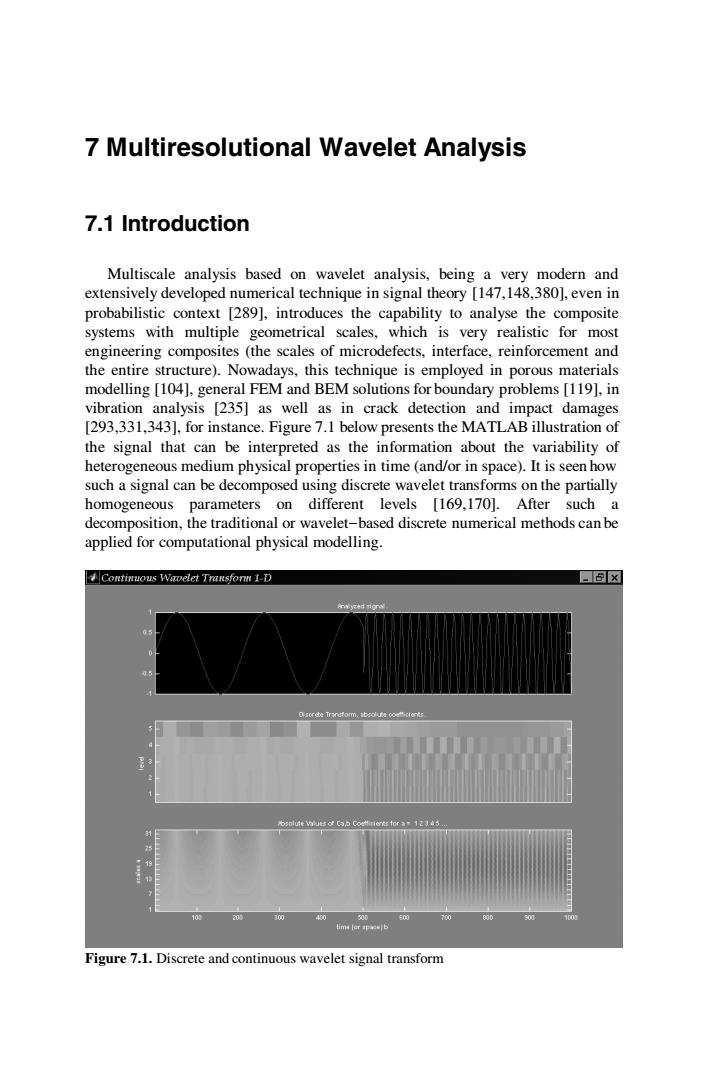正在加载图片...

7 Multiresolutional Wavelet Analysis 7.1 Introduction Multiscale analysis based on wavelet analysis,being a very modern and extensively developed numerical technique in signal theory [147,148,380],even in probabilistic context [289],introduces the capability to analyse the composite systems with multiple geometrical scales,which is very realistic for most engineering composites (the scales of microdefects,interface,reinforcement and the entire structure).Nowadays,this technique is employed in porous materials modelling [104],general FEM and BEM solutions for boundary problems [119],in vibration analysis [235]as well as in crack detection and impact damages [293,331,343],for instance.Figure 7.1 below presents the MATLAB illustration of the signal that can be interpreted as the information about the variability of heterogeneous medium physical properties in time(and/or in space).It is seen how such a signal can be decomposed using discrete wavelet transforms on the partially homogeneous parameters on different levels [169,170].After such a decomposition,the traditional or wavelet-based discrete numerical methods can be applied for computational physical modelling Continuous Wavelet Transfonn I-D 国x☒ scr过eTrarefom.tt4c0e"比teks time ler家*b Figure 7.1.Discrete and continuous wavelet signal transform7 Multiresolutional Wavelet Analysis 7.1 Introduction Multiscale analysis based on wavelet analysis, being a very modern and extensively developed numerical technique in signal theory [147,148,380], even in probabilistic context [289], introduces the capability to analyse the composite systems with multiple geometrical scales, which is very realistic for most engineering composites (the scales of microdefects, interface, reinforcement and the entire structure). Nowadays, this technique is employed in porous materials modelling [104], general FEM and BEM solutions for boundary problems [119], in vibration analysis [235] as well as in crack detection and impact damages [293,331,343], for instance. Figure 7.1 below presents the MATLAB illustration of the signal that can be interpreted as the information about the variability of heterogeneous medium physical properties in time (and/or in space). It is seen how such a signal can be decomposed using discrete wavelet transforms on the partially homogeneous parameters on different levels [169,170]. After such a decomposition, the traditional or wavelet-based discrete numerical methods can be applied for computational physical modelling. Figure 7.1. Discrete and continuous wavelet signal transform